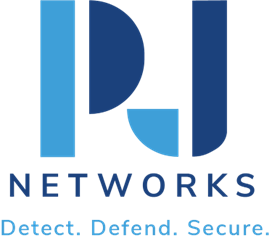Navigating Cybersecurity Compliance and Regulations
Introduction
In the modern digital landscape, data is the new currency. Organizations worldwide are increasingly storing, processing, and transferring vast amounts of sensitive information. This data influx makes businesses prime targets for cyberattacks. Consequently, regulatory bodies have developed numerous cybersecurity compliance standards to protect sensitive information and ensure organizations incorporate robust cybersecurity practices. This blog post explores the critical aspects of cybersecurity compliance, highlighting key regulations such as GDPR, HIPAA, and PCI DSS, while providing insights on achieving and maintaining compliance. By the end, you’ll understand the challenges, solutions, and benefits of adhering to cybersecurity standards.
Importance of Cybersecurity Compliance
Cybersecurity compliance isn’t just a legal imperative but a cornerstone of trust between businesses and their clients. Customers entrust organizations with their private data, expecting it to be safeguarded against breaches. Non-compliance can lead to substantial penalties, reputational damage, and loss of customer trust. As cyber threats evolve, compliance ensures that organizations continuously enhance their security measures, staying ahead of potential vulnerabilities. Moreover, regulating data protection helps achieve uniformity, fostering a secure cyberspace conducive to business growth.
Overview of Major Regulations
GDPR
The General Data Protection Regulation (GDPR) is a landmark legislation by the European Union designed to regulate the handling of personal data. It applies to all organizations operating within the EU and those handling EU citizens’ data, regardless of location. GDPR emphasizes individuals’ rights, mandating transparent data collection, processing practices, and requiring explicit consent. Non-compliance can result in hefty fines, making it pivotal for organizations to align their data protection policies with GDPR’s stringent demands.
HIPAA
The Health Insurance Portability and Accountability Act (HIPAA) is crucial in safeguarding health information in the United States. It applies to healthcare providers, insurers, and employers who handle Protected Health Information (PHI). HIPAA’s primary aim is to ensure patient data privacy while facilitating the secure flow of information necessary for delivering quality healthcare. It establishes guidelines for securing health information systems, enforcing strict access controls, and mandates incident reporting procedures.
PCI DSS
The Payment Card Industry Data Security Standard (PCI DSS) is a globally recognized set of security requirements designed to protect credit card information. Applicable to all organizations processing, storing, or transmitting cardholder data, PCI DSS’s rigorous standards include measures such as encryption, access control, and regular security testing. Compliance helps prevent credit card fraud and enhances consumers’ confidence in electronic transactions.
Steps to Achieve Compliance
- Understand the Requirements: Begin by understanding which regulations apply to your organization. Grasp the specific mandates, document their implications, and assess your existing cybersecurity framework against these standards.
- Conduct Risk Assessments: Identify potential vulnerabilities and threats to your data. Regular risk assessments will enable you to prioritize cybersecurity investments based on the most significant risks.
- Develop a Robust Security Policy: Encompass all regulatory demands in your security policy. Ensure it includes data encryption, access controls, and incident response strategies tailored to address compliance needs.
- Train Employees: Educate your workforce on the importance of cybersecurity compliance and data protection regulations. Regular training sessions will help employees recognize and mitigate potential security threats.
- Implement Continuous Monitoring: Utilize advanced security tools to monitor systems continuously, detect breaches early, and respond promptly. This proactive approach helps maintain compliance and mitigate potential impacts.
- Engage with Legal and Compliance Experts: Collaborate with experts to interpret complex legal requirements accurately and adapt your compliance strategy accordingly.
- Document Everything: Maintain meticulous records of your compliance processes. Documentation serves as proof of your adherence to regulations and provides valuable insights during audits.
Challenges and Solutions
Challenges
- Complexity of Regulations: Navigating varying and complex regulatory requirements can overwhelm many organizations, especially those operating in multiple jurisdictions.
- Rapid Technological Changes: As technology evolves, staying compliant becomes challenging, requiring continual adjustments to cybersecurity measures.
- Resource Constraints: Limited resources can hinder an organization’s ability to invest in necessary technological upgrades and expert consultations.
Solutions
- Regulatory Intelligence Tools: Leverage tools that offer insights into evolving regulations, ensuring you’re always informed and prepared.
- Automation: Use automated systems for routine compliance checks and reporting to streamline processes and alleviate resource constraints.
- Outsource to Cybersecurity Partners: Consider partners specializing in cybersecurity compliance to fill the gaps in expertise and resource availability.
Benefits of Compliance
Aligning with cybersecurity standards provides multiple advantages:
- Risk Reduction: Mitigating risks through compliance-centered strategies reduces the likelihood of data breaches.
- Improved Reputation: Demonstrating a commitment to data protection bolsters trust with clients and partners, enhancing your brand reputation.
- Competitive Advantage: Staying compliant gives your organization a competitive edge, reassuring clients of your robust cybersecurity posture.
- Operational Efficiency: Compliance often enhances internal processes and procedures, contributing to overall efficiency and effectiveness.
Conclusion
Navigating cybersecurity compliance is crucial to protecting sensitive data and maintaining business integrity in an ever-evolving digital environment. By understanding key regulations like GDPR, HIPAA, and PCI DSS, and employing strategic compliance measures, organizations can address the multifaceted challenges they face. Beyond averting penalties, compliance fosters a culture of security, trust, and operational excellence. By viewing compliance as a dynamic and integral part of business operations, organizations protect their interests and contribute positively to a secure digital ecosystem.
